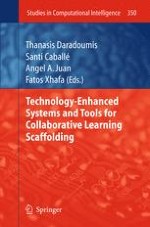Technology-Enhanced Systems and Tools for Collaborative Learning Scaffolding is a major research theme in CSCL and CSCW research community. This book presents up-to-date research approaches for developing technology-enhanced systems and tools to support functional online collaborative learning and work settings. It comprises a variety of research topics that span from the study of frameworks and infrastructures that foster collaborative learning and work through the application of different methods (distributed e-learning repositories, content creation and customization, social networks, collaborative ontologies building, and educational games) to the use of personalization and adaptation techniques to support the development of more powerful e-collaboration settings, including methodologies and tools for analyzing students' interactions with the aim to increase students' collaborative behaviors, performance and group organization. Researchers will find in this book the latest trends in these research topics, which gives them the opportunity to deepen further on the above issues and to extend their knowledge to other areas. Academics will find practical insights on how to use conceptual and experimental approaches in their daily tasks. Developers from CSCL community can be inspired and put in practice the proposed models and evaluate them for the specific purposes of their own work and context.
